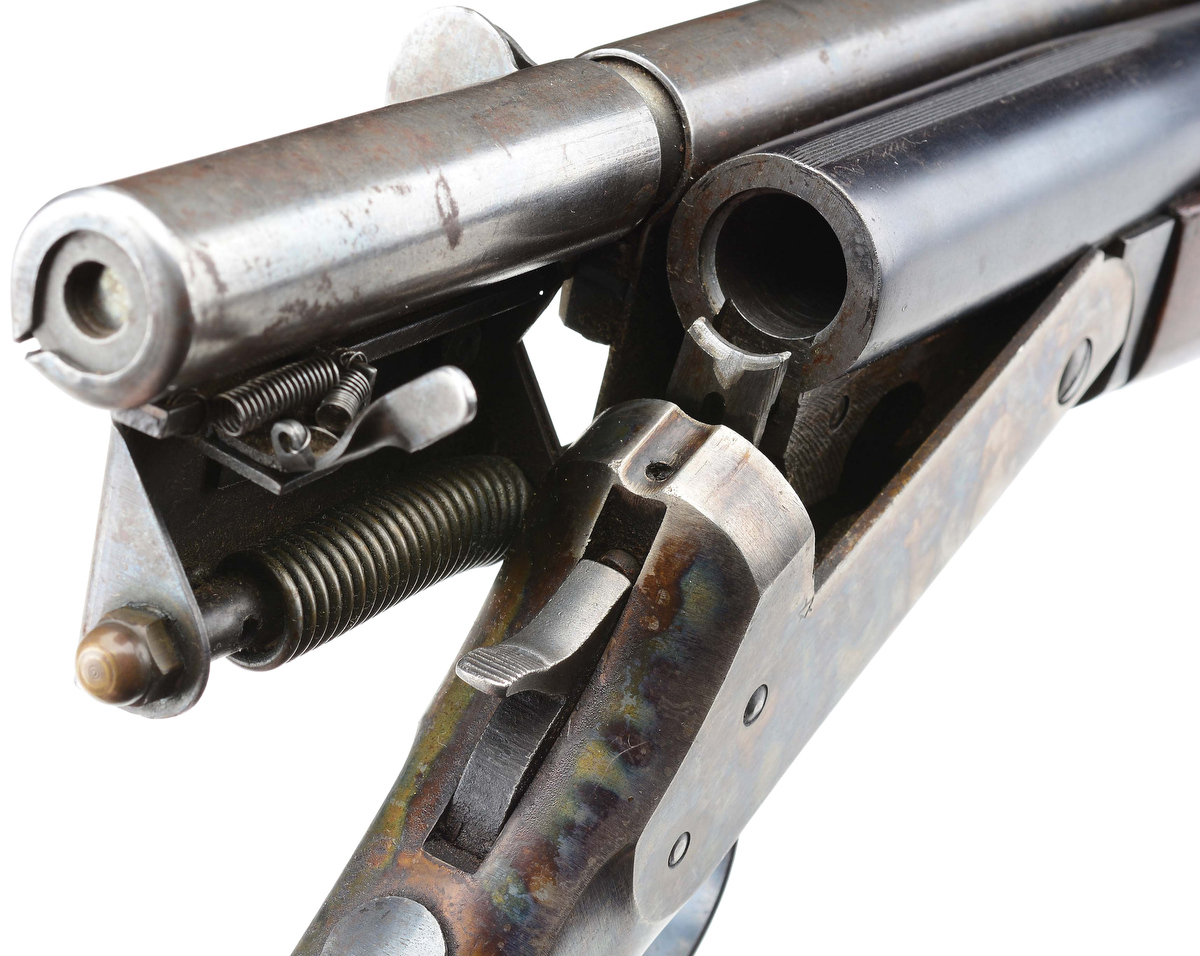By Robert Bruce –
Prelude to the Panzerfaust
This final installment of the author’s research series into WWII German anti-tank weaponry is again inspired by “Men Against Tanks,” a dramatized but deadly serious German wartime training film found on YouTube (search: männer gegen panzer). Going back in time to the outbreak of War, we now turn our attention to an examination of some marginally effective, anti-tank weapons and the desperate rush for arms to counter a new generation of armored fighting vehicles that began entering the arena.
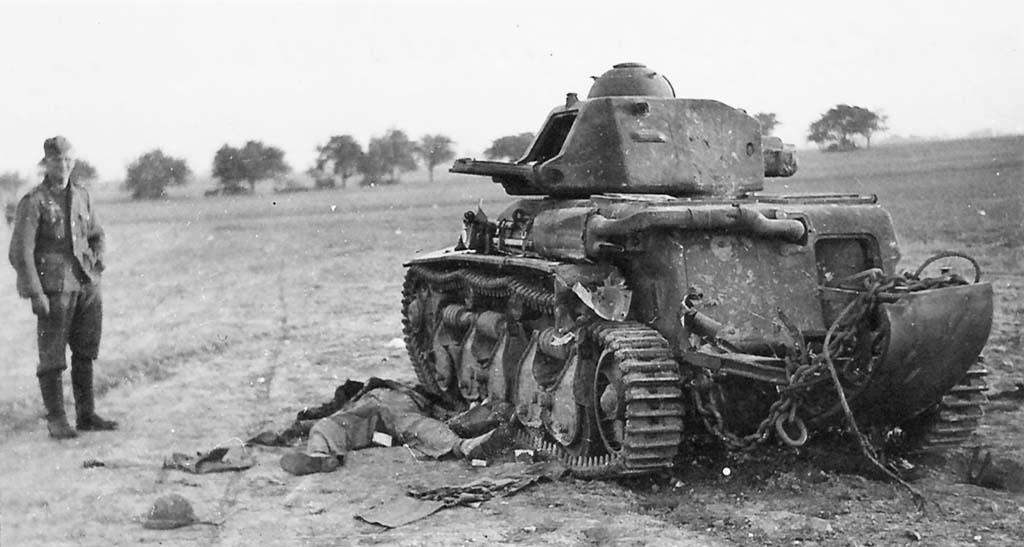
Renault R35 Tank
May–June 1940, France. An apparently pleased German soldier stands next to a “French Renault R35 tank, knocked out in a field. Lying next to the vehicle is a member of the crew who was killed” (Bundesarchiv via Waralbum.ru). With a stubby, low-velocity 37mm main gun, clad in just 43mm / 1 5/8 inches of armor at its strongest points and crawling along at no more than 12 mph, theChar leger Modele 1935 Rwas easy prey for even the little 37mm PAK 35/36 in regular service with German assault units. This was soon to change as heavier, faster tanks began entering the fray.
From Technical and Tactical Trends, No. 21, March 25, 1943
Military Intelligence Service, War Department
Since the original basic designs upon which the equipment of the present German army was produced, there has been no pause in the intensity of development which followed. As the German army gained experience, newer and more efficient designs of equipment were produced, and existing types were modified as circumstances required.
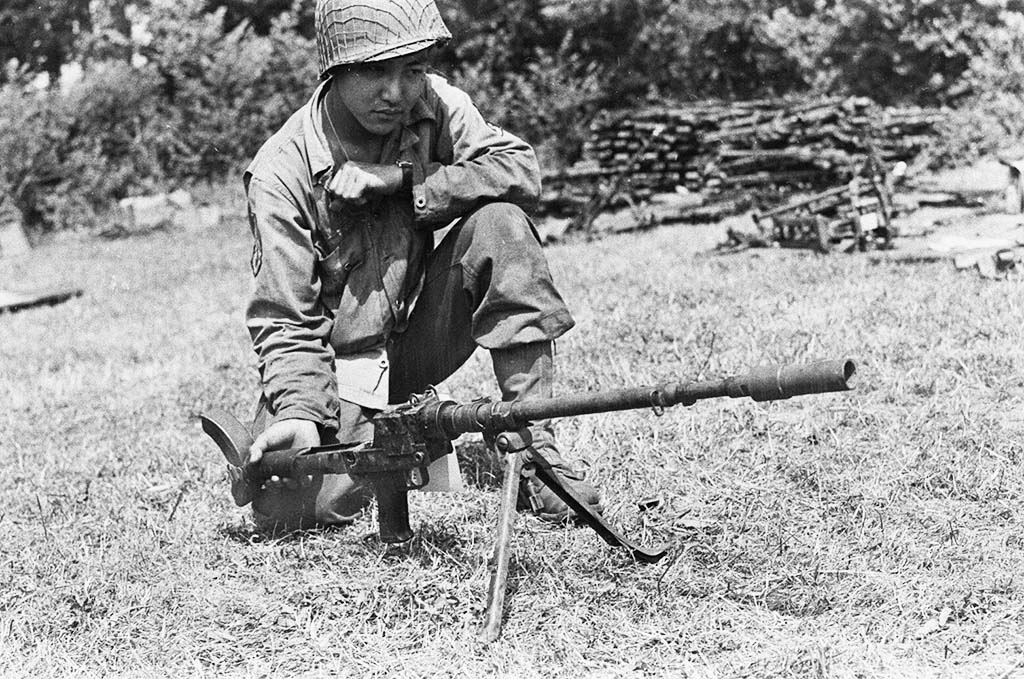
Granatbuchse 39
July 20, 1944, Saint-Mathieu-de-Treviers, France. “894th Ordnance Company Tec 3 Raymond Suen with a 7.92mm German anti-tank rifle Gr. B. 39” (Signal Corps/National Archives). When it became obvious that the original Pz. B. 39 anti-tank rifle needed more capability, it was reworked as a grenade launcher, firing high-explosive, fragmenting, anti-personnel rounds as well as small and large anti-tank grenades. The launcher threaded to the barrel is the Schiessbecher, which is also used on the Mauser Kar 98k rifle, firing the same grenades.
Lackadaisically Light Tanks
With some notable but relatively rare examples, most tanks in service with European armies in the 1930s were slow and thinly armored. Thus, practicalities of planning and equipping for War among potential adversaries dictated anti-tank weapons that were just “good enough” to take them out should the need arise.
Arise it did on the first day of September 1940, when Adolph Hitler’s Wehrmacht (armed forces) stormed across the border with Poland, a country quickly doomed from a pincer movement as Joseph Stalin’s Red Army rolled in from the East. This immediately drew France into the fight because of treaty obligations, and Britain soon followed for the same reason. Then, the Hitler–Stalin marriage of cynical convenience got an instantly nasty divorce on June 22, 1941, with “Operation Barbarossa.” Triumphant German Panzers (tanks) roared toward Moscow, and the Soviets collapsed into rapid retreat mode.
“So far, so good,” for German infantrymen as the saying goes, because the various types of anti-tank guns supporting them were brutally efficient, but not so good when no PAK—Panzer Abwehr Kanone(anti-tank cannon)—was present. What was the German Panzerjäger(tank hunter) to do?
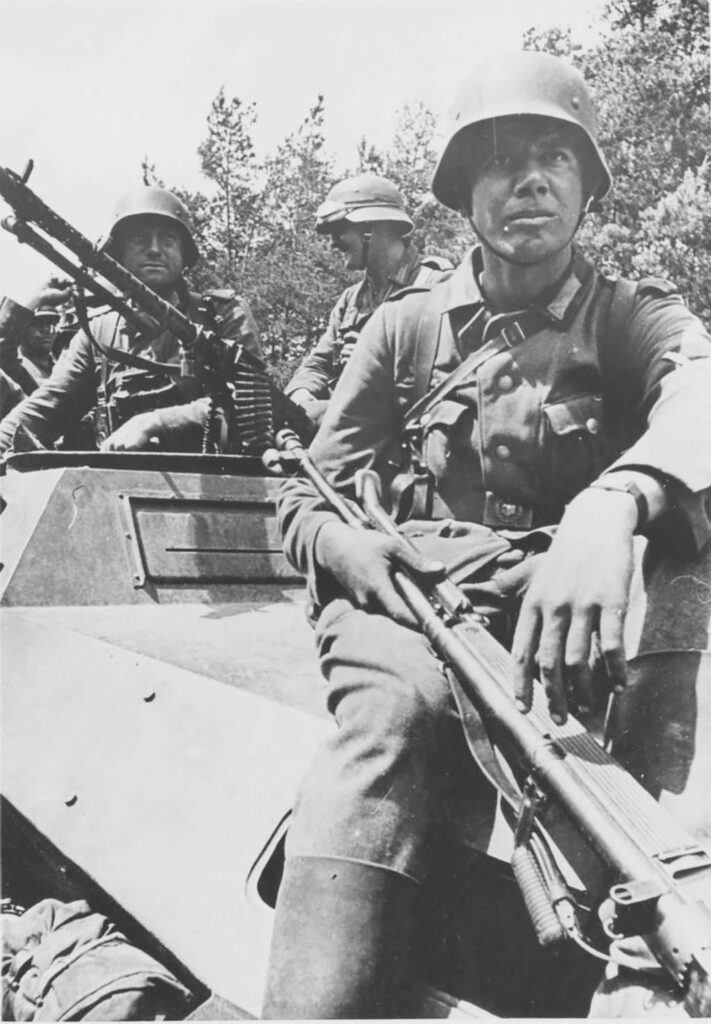
Riding into Russia
“German infantry on the Sd.Kfz 251 Ausf. A[n] armored personnel carrier, on the road to the USSR. On the hood sits a soldier with 7.92mm Pz. B. 39 anti-tank rifle” (Bundesarchiv via Netherlands National Archive). Noting the slide-on mounting fixture just below the rear sight, the rifle’s distinctive sidesaddle 10-round cartridge hold-ers have been temporarily removed; probably for convenience in transport. Its prominent circular, side-vented muzzle brake helps tame the special cartridge’s heavy recoil.
Heavier Hitters
Although not properly classified as infantry weapons, some larger, highly effective tank-killing tools were almost always nearby, working in close coordination with frontline units. Standard-issue models were quickly augmented by others captured from Polish, French, British and Russian forces.
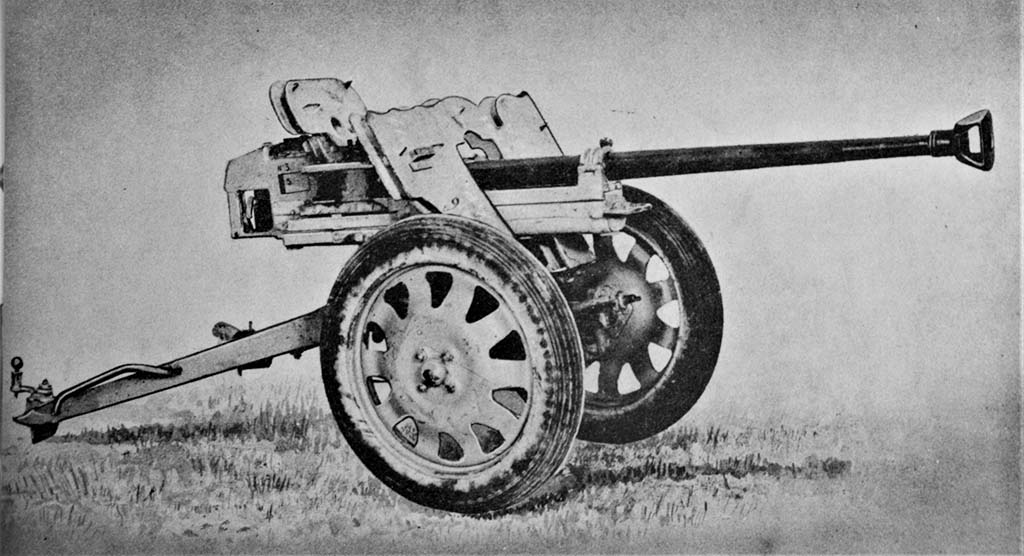
20cm Pz. B. 41
British units up against the German Afrika Korps in 1941 felt the fury of this diabolical 28/20mm, tapered bore anti-tank gun modeled on the “Gerlich principle” with a sizzling muzzle velocity of 4,550 fps, penetrating 2.6 inches of armor at 400 yards.
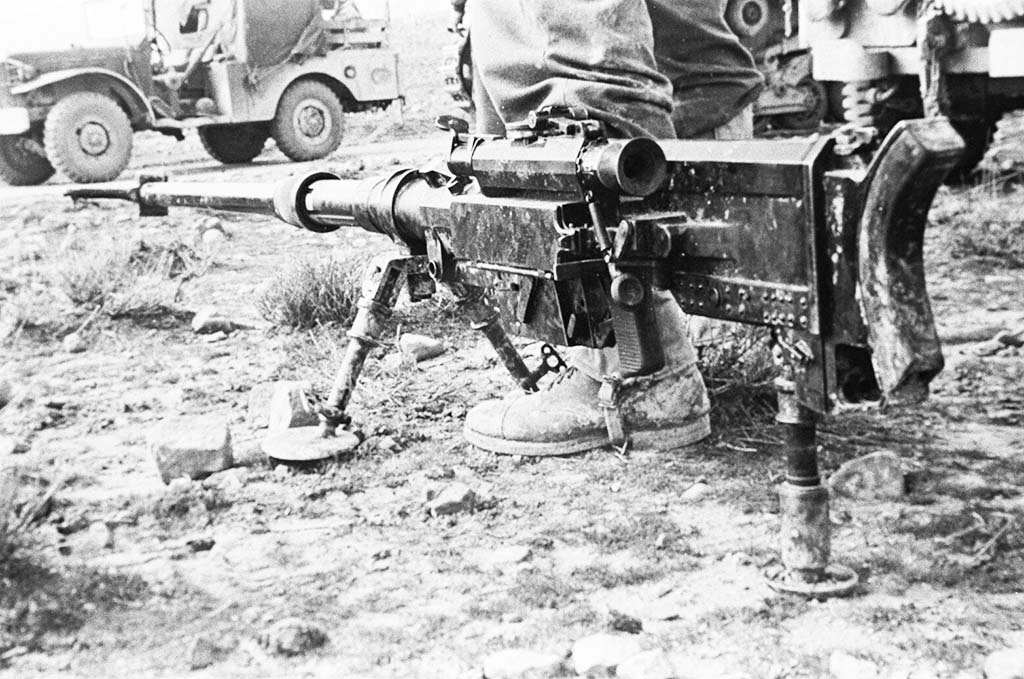
20mm Solothurn s/8-1100
February 24, 1943, Kasserine Pass, Tunisia. A captured Ger-man Solothurn 20mm anti-tank rifle. “This gun, an improved version of the Solothurn 1933 model manufactured in Switzer-land by Waffenfabrik Bern, is a magazine-fed, recoil-operated, semiautomatic shoulder weapon which can be fired from a bipod or a low-lying, pneumat-ic-wheeled carriage” (Ordnance Technical Intelligence Bulletin). Defeating 30mm / 1 1/8 inches of armor flat-on at 500 yards, it easily slaughtered American half-tracks, scout cars and other light-skinned, armored fighting vehicles in this infamous encounter with German forces.
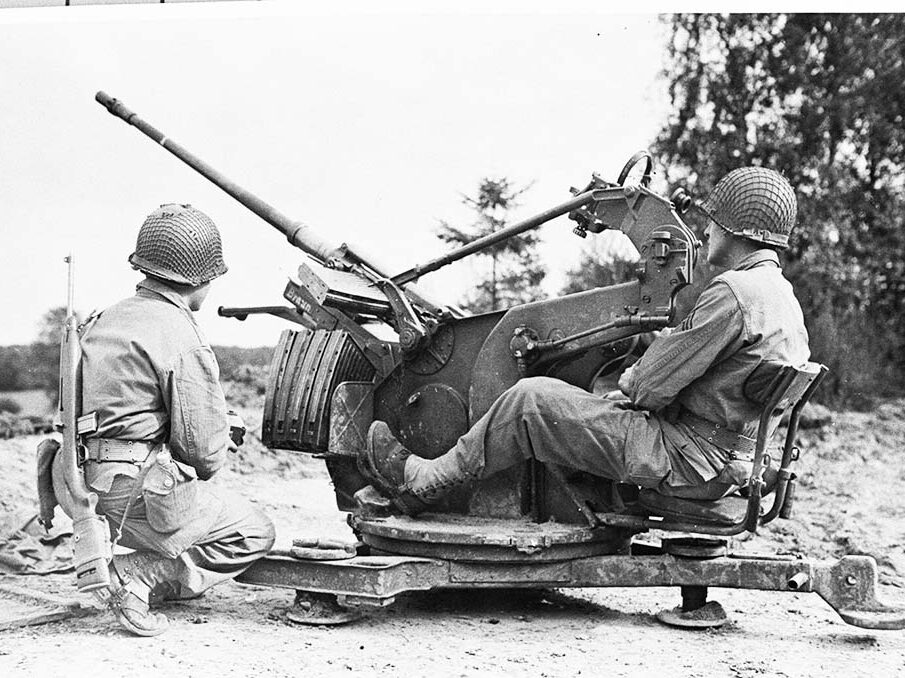
2cm FlaK 30
October 8, 1944, Aachen, Germany. “American GIs with a captured Ger-man 20mm” (Signal Corps/National Archives). Firing both high-explosive and armor-piercing shells, it was a deadly weapon against propeller-driven aircraft and many armored vehicles, reportedly piercing 25mm / 1 inch of steel at 400 yards.
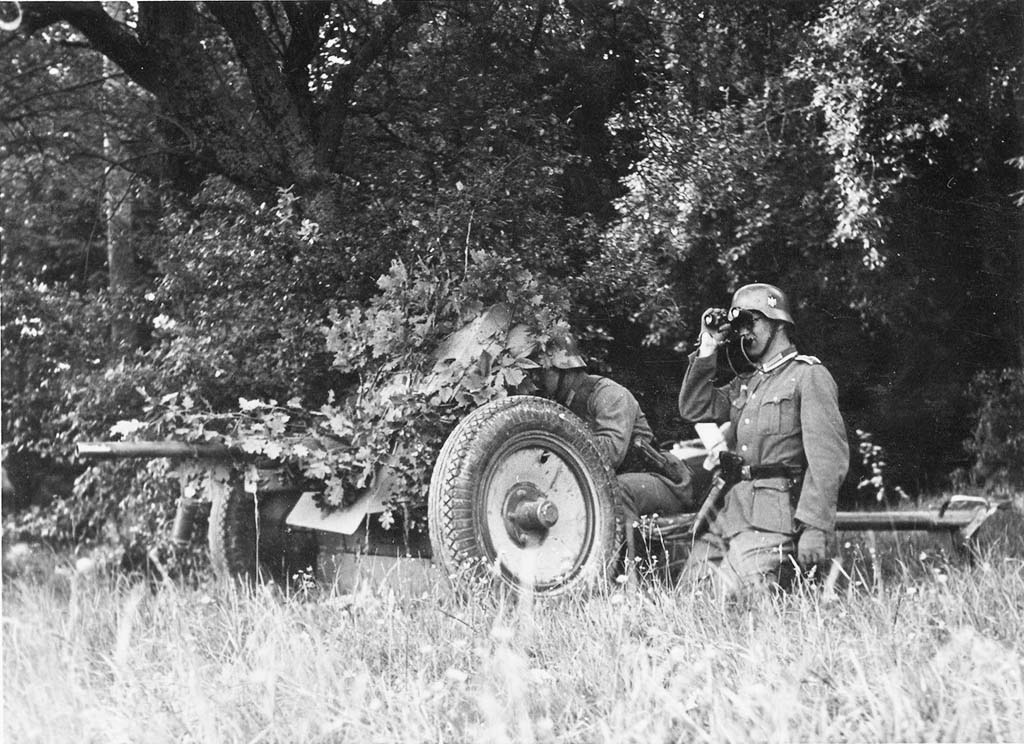
37mm PAK 35/36
“German 37mm PAK 35/36 anti-tank gun with crew, camouflaged and set for direct fire at the edge of a forest on the Eastern Front” (Bundesarchiv via Waralbum.ru). Combat weight just 700 pounds and served by a five-man crew, the little A-T cannon was relatively easy to move around and quickly put into action. Initially, Germany’s main close-support, anti-tank gun, its limited range and armor penetra-tion (49mm / 1.9 inches at 400 yards) soon proved inadequate, leading to the 3.7cm Stielgranate 41, a hollow-charge finned bomb.
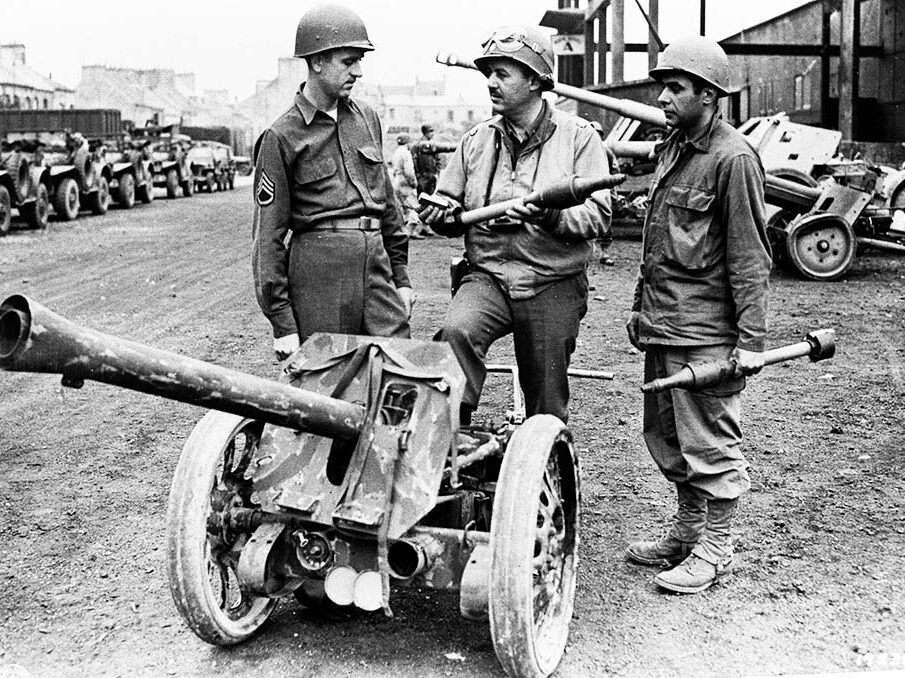
8.8cm Raketenwerfer 43 (Püppchen)
August 7, 1944, Cherbourg, France. “Ordnance men with captured German anti-tank rocket gun.” It’s important to note that the electrically actuated, drum-finned rockets they’re holding are actually for the 8.8cm Panzerschreck. Whimsically nicknamed, “Püppchen” (little dolly) in official German nomenclature: “This weapon is a closed-breech rocket launcher which fires a rocket projectile. From this weapon, as limited by the sight, a maximum effective range of 765 yards is obtained” (Ordnance Techni-cal Intelligence Bulletin). An odd little paratrooper weapon, it was vastly outclassed by the very powerful ultra-light 75mm and light 105mm recoilless guns.
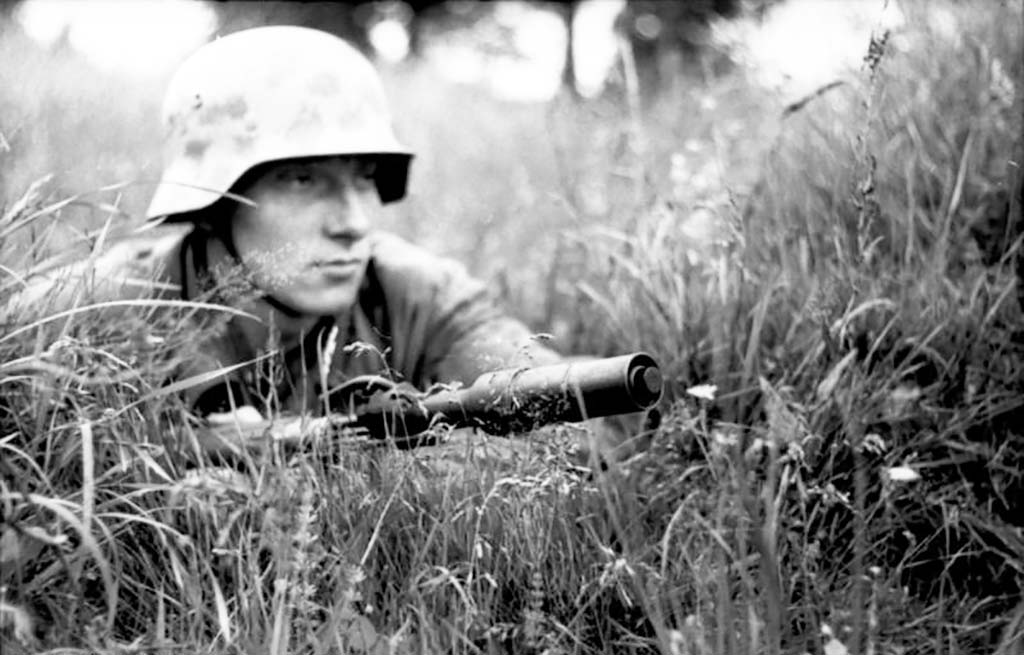
Schiessbecher
June 21, 1944, France. “German soldier with camouflaged helmet lying in a grassy improvised fighting position, holding a rifle with a rifle grenade launcher” (Bundesarchiv). The little 30mm “shooting cup” grenade launcher could be easily clamped to the muzzle of standard rifles, allowing the infantryman to fire a variety of munitions including anti-personnel, anti-materiel and anti-armor types. It appears the one in his launcher cup is the puny Gewehr-Sprenggranate, an anti-personnel type, weighing 9 ounces with just 1.1 ounce of explosive filler.
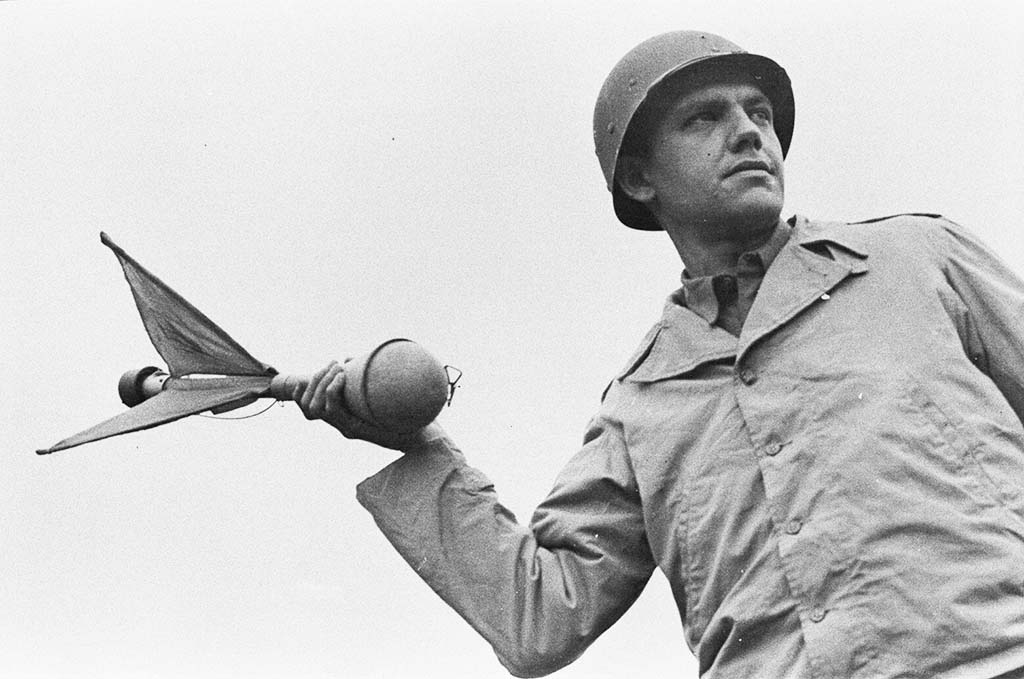
Panzerwurfmine (Lang)
August 6, 1944, Normandy, France. “At a captured German ammunition depot, Staff Sergeant Howard Tournier simulates throwing a Pan-zerwurfmine.” The canvas fins on this bizarre, hollow-charge, anti-tank grenade have been unfolded for apparently dramatic effect in the photo. “This is a recent type anti-tank grenade. It is of hollow-charge design and is thrown by hand at tanks from a distance of 20 to 30 yards. The explosive warhead contains 18 ½ ounces of 50/50 R.D.X./T.N.T. cast around a hollow-charge liner made of pressed steel. Weight 3 pounds, length 21 inches” (Ordnance Technical Intelligence Bulletin).
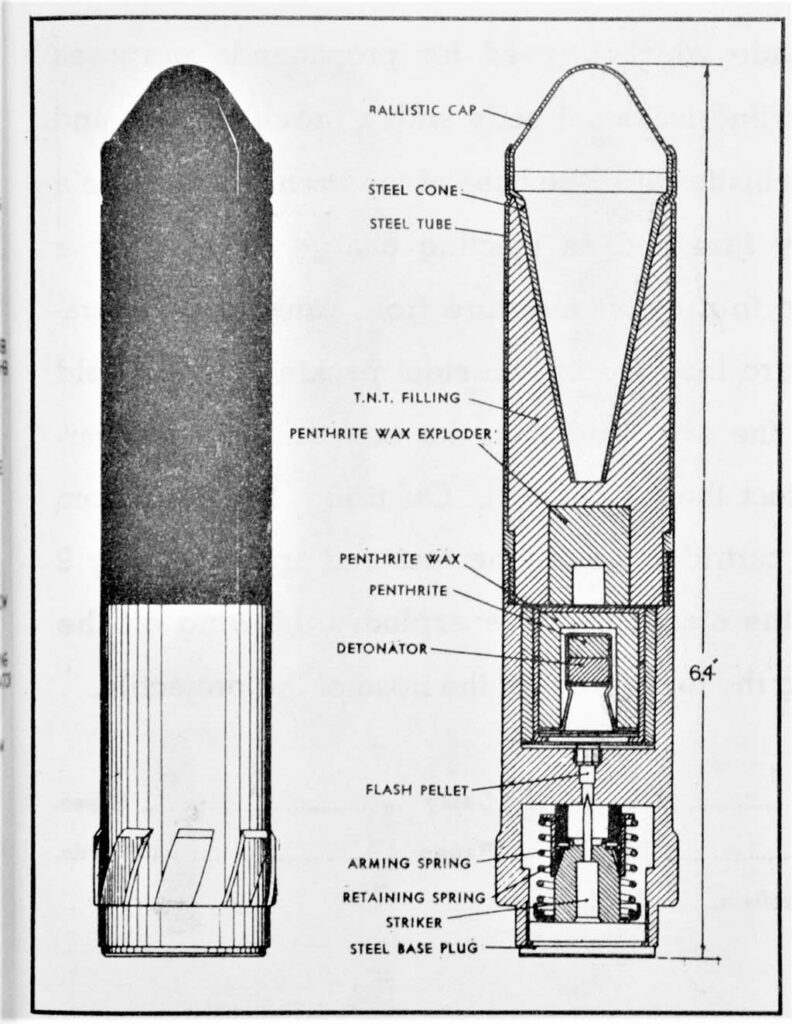
Gewehr-Panzergranate
“The head, a seamless steel tube fitted with a light ballistic cap, contains a hol-low-charge cone and an explosive filler of T.N.T. Weight 8.8 ounces, filler weight 1.75 ounces, range 50 yards” (Ordnance Techni-cal Intelligence Bulletin).
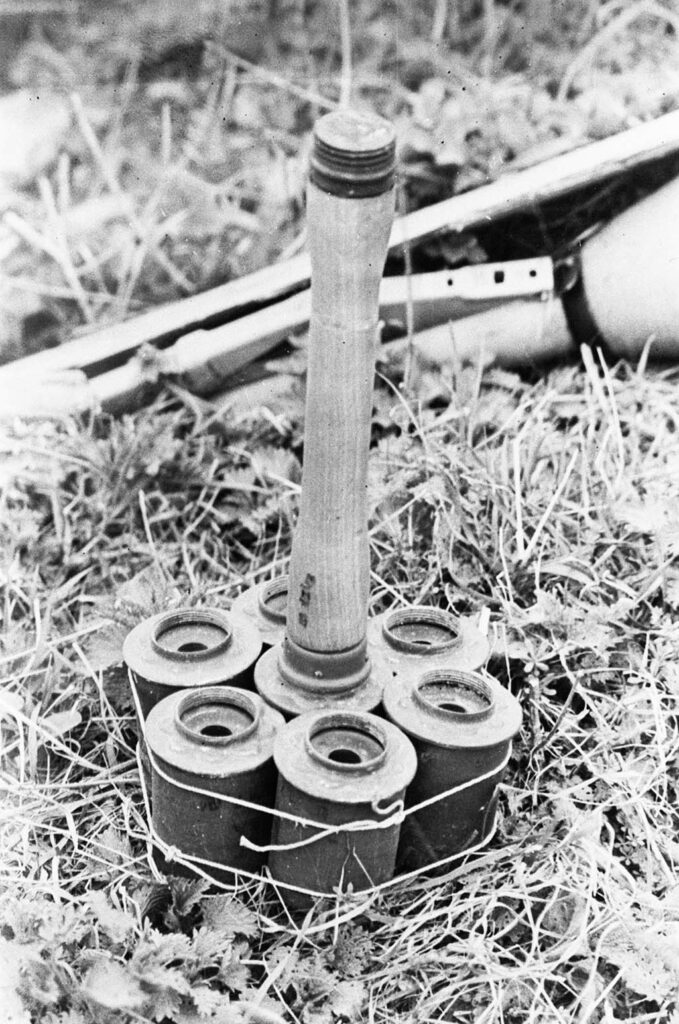
Geballte Ladung
March 31, 1945, Fritzlar, Germany. “9th Armored Division infantry found numerous examples of these Geballte Ladung (bundled charge or concentrated charge).” “The Stielhandgranate 24 contained 165 grams of explosives, more than enough for a hand grenade, but for the infantry, the need for more blast effect sometimes forced them to go for other solutions. The German manuals described how the soldiers themselves could make a convenient concentrated charge from seven heads of the Stielhandgranate 24. This somewhat heavy 7-pound ‘hand grenade’ contained 1,155 grams of explosives and could be used for demolition, anti-tank or anti-pillbox work” (Bergflak’s Lounge, bergflak.com).
“PAK” ‘Em In
While sheer numbers of medium and heavy Allied tanks too often overran German infantry units, they counted on help from some larger caliber PAK (Panzer Abwehr Kanone) guns that could still do the job. The dozen standard German PAKs were immediately joined by others acquired in combat, ranging from 50mm up to others of monstrous proportion.
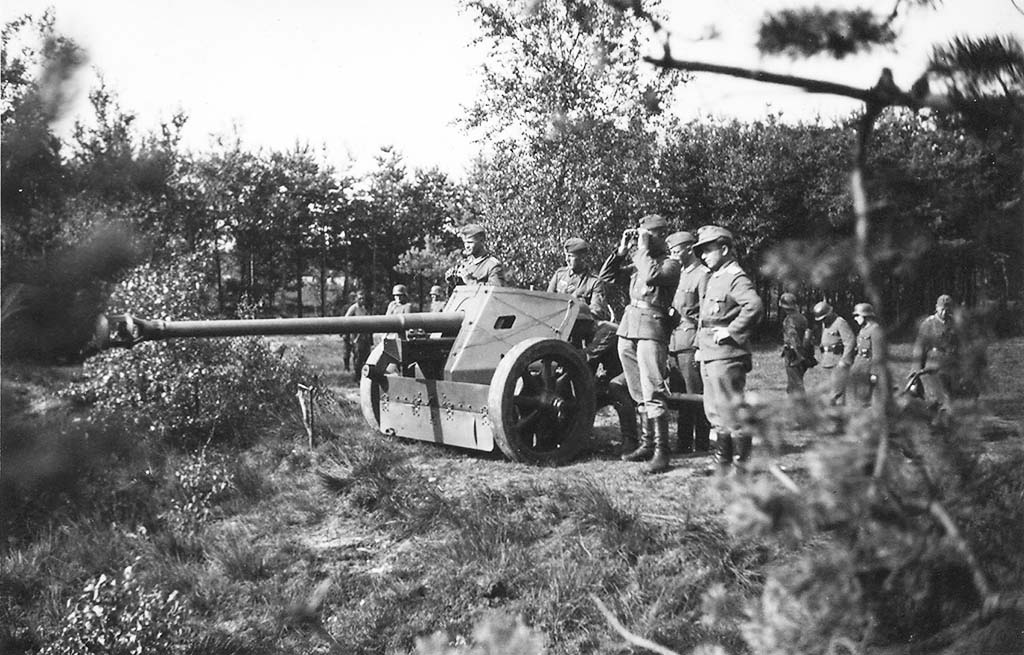
7.5cm PAK 40
“75mm PAK 40 on a hill in Italy.” Far more common and nearly as effective as the fearsome and legend-ary 8.8cm FlaK “Eighty-Eight” dual-purpose, high-velocity gun, “The PAK 40, an anti-tank and antiper-sonnel weapon. … Muzzle velocity 2,525 fps, penetra-tion 154mm / 6 1/8 inches with tungsten core ammuni-tion. Effective range 1,800 meters in direct fire. Rate of fire 14 rpm” (Ordnance Technical Intelligence Bul-letin).
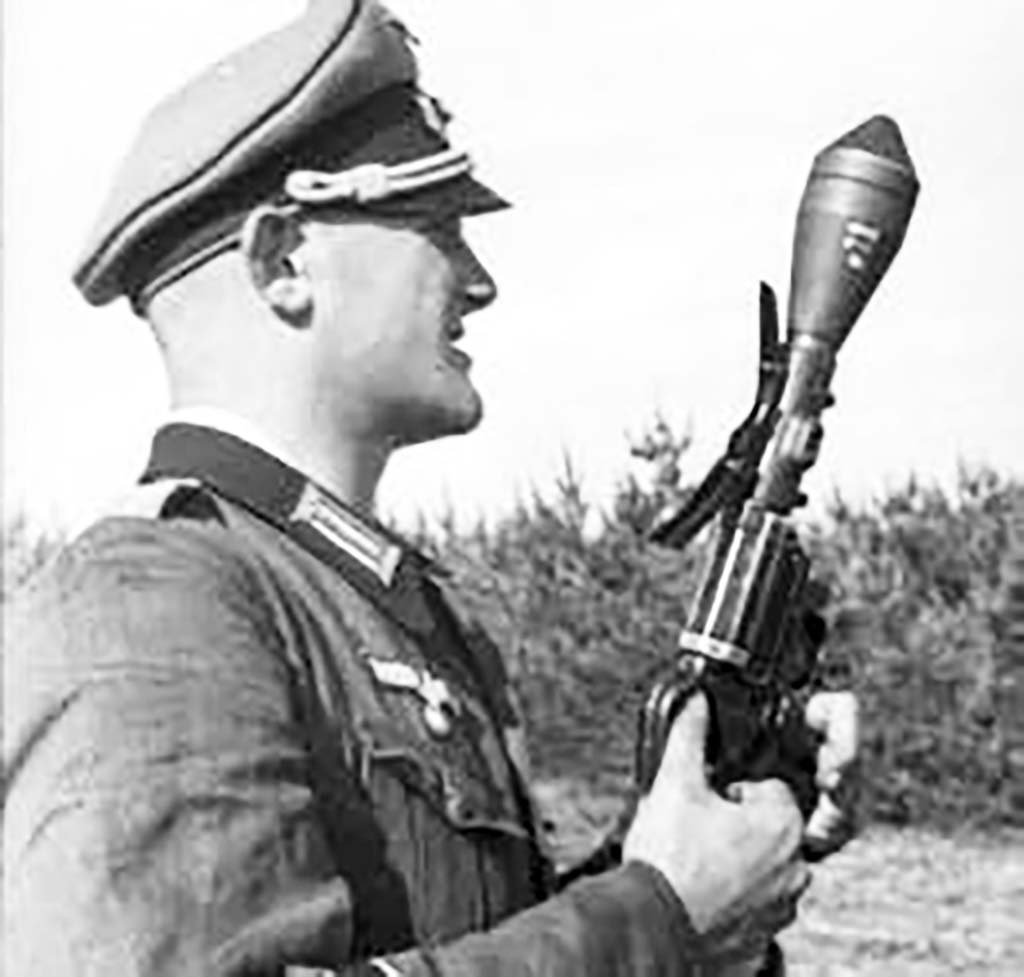
Kampfpistole
Infantry Anti-Armor Weapons
German infantrymen undoubtedly appre-ciated help from all those bigger tank busters, but far too often they were on their own while facing armored threats. The most common remedy was the rifle grenade of various types, their launchers and specialized ammunition liberally dis-tributed from squad level on up. There was also the Kampfpistole, firing anti-tank grenades from a modified flare gun.
Desperation
Moving now into the tragic realm of abject desperation combined with incredible courage, we encounter several anti-tank weapons that are often as dangerous to the users as to their intended targets. Taking the term close combat to the extreme, “Molotov cocktails” and other contrivances required soldiers with utmost daring and steely nerves to perform as designed. It is no wonder that most Tank Destruction Badges were award posthumously.
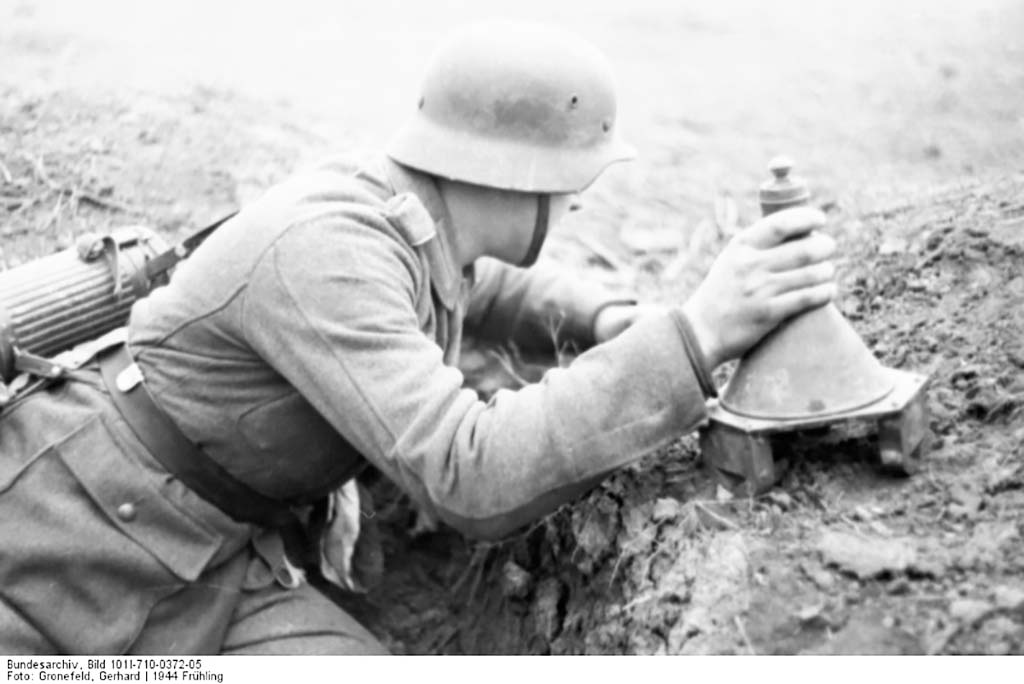
Hafthohlladung 3kg
Spring 1944. Ready to jump from a protective trench and rush to the attack, this undoubtedly brave German Panzerknacker (tank cracker) will attempt to fix this 8-pound, hollow-charge, anti-tank mine—held in place by three strong magnets—to the steel armor of an enemy tank. “The German magnetic, hollow-charge, anti-tank mine, designed for use by tank-hunting squads, consists of a main filling of 1 pound, 15 ½ ounces of T.N.T. in a pressed metal container of conical shape. Its standard (B.Z.E.) friction igniter has a 4.5-second delay” (Ordnance Technical Intelligence Bulletin).
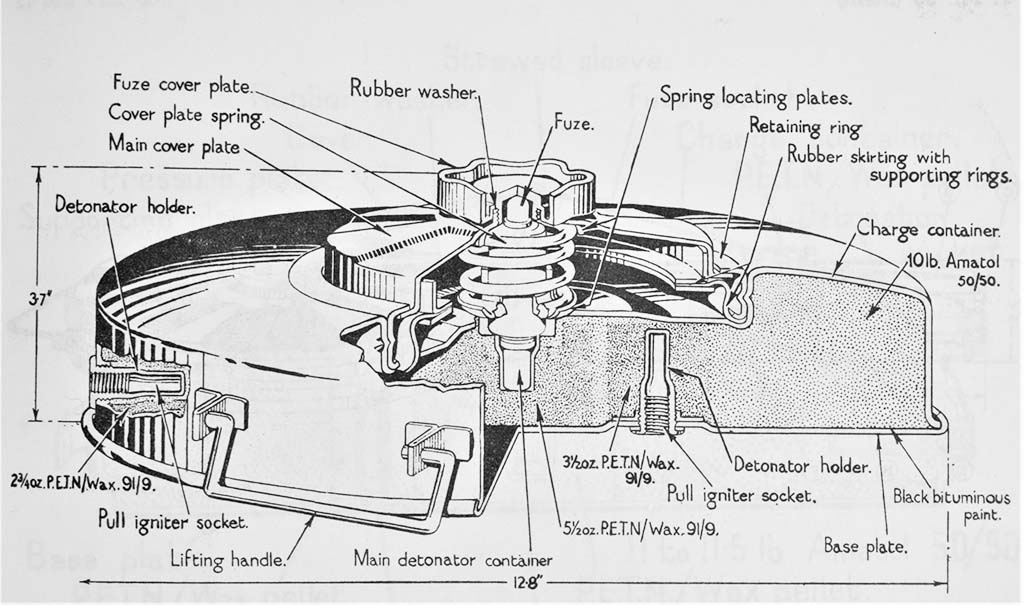
Tellermine 42
Nearly invisible when emplaced and with devastating blast effect from a bursting charge of 12 pounds of cast TNT, the four Teller-mine (plate mine) types in the series were the scourge of Allied tankers. Most often, combat engineers buried them along likely avenues of approach, but tactical doctrine also called for infantry tank hunter teams to attach long drag wires to pull the mines into the path of oncoming tanks.
German “Tank Hunting” Tactics
From Tactical and Technical Trends No. 29, July 15, 1943
Military Intelligence Service, War Department
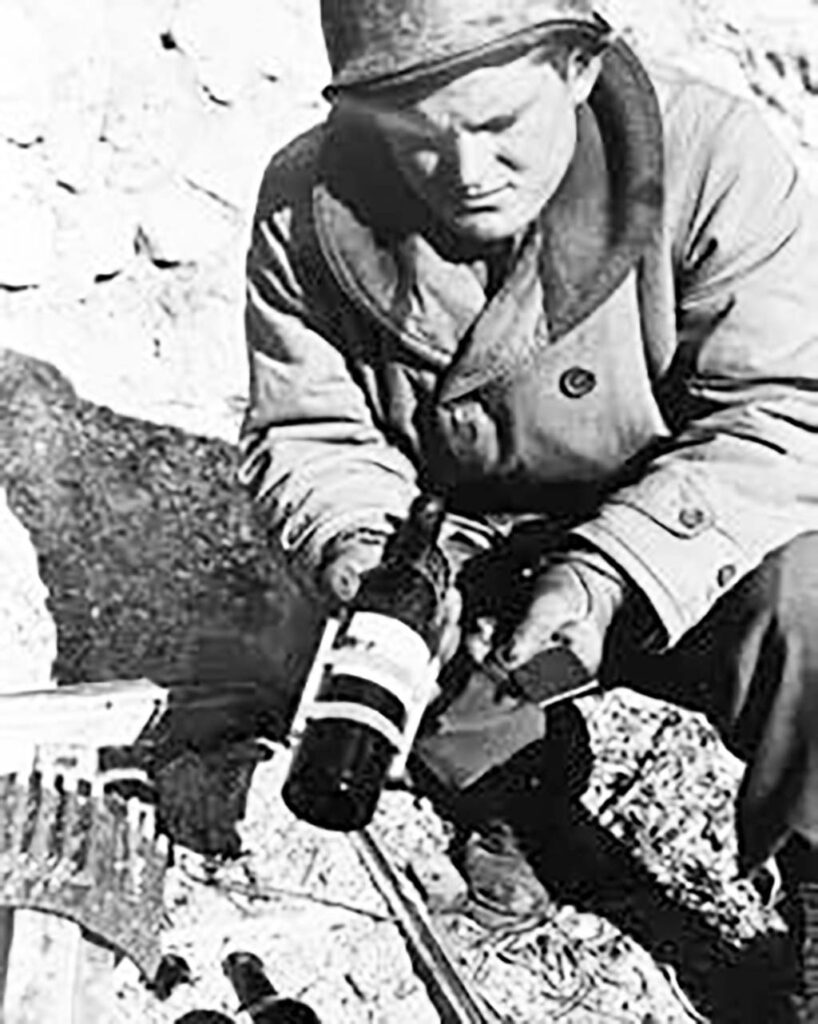
The equipment for close-in tank hunting consists of the following: incendiary bottles and Tellermines, TNT, automatic weapons (our own or captured), submachine guns, Very pistols, hand grenades, smoke bottles and camouflage material, as well as hatchets, crowbars, etc., to use as clubs for the bending of machine-gun barrels projecting from the tank. Of this equipment the useful and available weapons for blinding, stopping and destroying the tank should always be carried along.
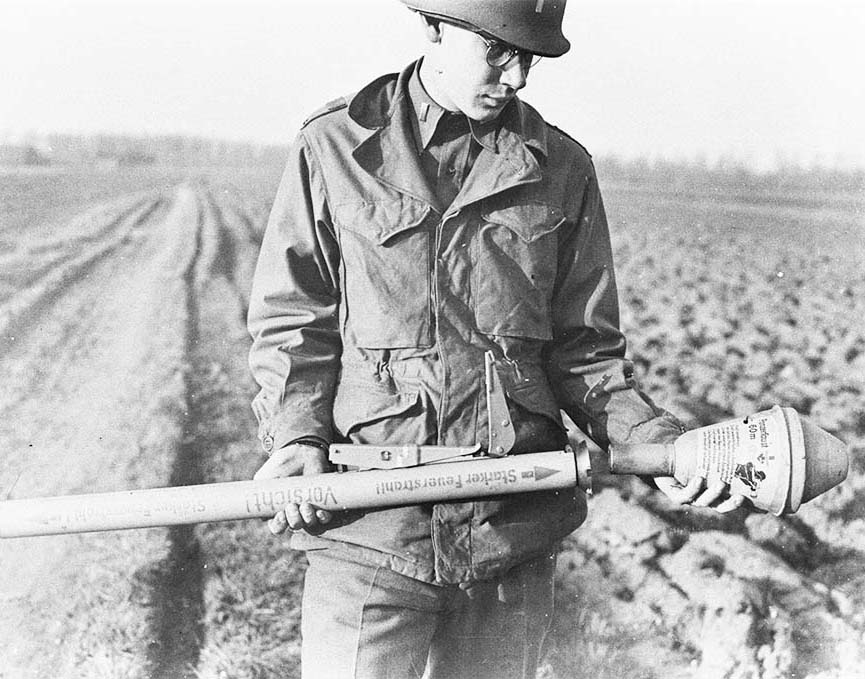
Panzerfaust 60
March 14, 1945, Germany. “Lieutenant John Reller, 9th U.S. Army, examines a Panzerfaust 60, a single-shot, throwaway, recoilless, anti-tank rocket weapon with a warhead containing 1.6 pounds of Cyclonite/Pentolite high-explosive shaped charge filling” (U.S. Army Signal Corps/National Archives). Developed specifically to give individual German soldiers the ability to take out enemy armor at a somewhat safe distance, more than 8 million were manufactured between 1943 and 1945.
Epilogue
Because Allied assaults only grew larger, stronger and more ferocious as the War progressed, all of these des-perate anti-tank weapons remained in service right up to the fall of Berlin and the bitter end of Hitler’s “Thousand Year Reich” on May 7, 1945. But beginning in 1943, German infantrymen were fortunate to receive newly developed Panzerfaust and Panzerschreck weapons that gave at least some hope of defeating tanks at a survivable distance. In-depth examinations of these remarkable developments are chronicled by the author in Parts 1 and 2 (Small Arms Review, Vol. 25, No. 1 and No. 2).
References
Books
The author acknowledges and appreciates permission received to research the U.S. Army Ordnance Museum’s col-lection of photos and original U.S. WWII War Department, Military Intelligence publications. Excellent reprints with many entries from these are readily available with a bit of searching.
Illustrated Arsenal of the Third Reich, Donald B. McLean, Normount Technical Publications, 1975.
TM-E 30-451: Handbook On German Military Forces (1943), Military Intelligence Division, War Dept., U.S. Government Printing Office, 2020.
Video
“Männer Gegen Panzer,”
youtube.com/watch?v=3L0LffV2obA.
March 2021
| This article first appeared in Small Arms Review V25N3 (March 2021) |





